Research
My research aims to enhance planetary and exoplanetary sciences by studying the properties of exoplanets and their host stars through data analysis and modeling. Below, you can read more about my main projects:
Interior Composition Model for Sub-Neptune Exoplanets: A Focus on K2-18b
The study of exoplanets has uncovered a variety of planetary compositions, offering insights into their internal structures. However, the differentiation of exoplanets' interiors introduces degeneracies among possible compositions, complicating efforts to accurately infer their internal properties. To address this, I utilized a novel approach by combining the 1D planet interior structure model, MAGRATHEA, with a nested sampling algorithm, UltraNest, aiming to constrain the interior structure of planets larger than Earth but smaller than Neptune (1-4 R⊕), the most common class in our galaxy. The model considers four components: an iron core, a silicate mantle, a water/ice hydrosphere, and an H2-dominated atmosphere.
Using nested sampling, I explored various compositional models and applied this method to K2-18b, a potentially habitable exoplanet, then compared my approach and results with previous studies. My findings suggest that K2-18b likely consists of low-density materials, possibly with an extended atmosphere and a mixed Fe-Si core. This research deepens our understanding of exoplanetary interiors, which are crucial for determining planetary climates and potential habitability.
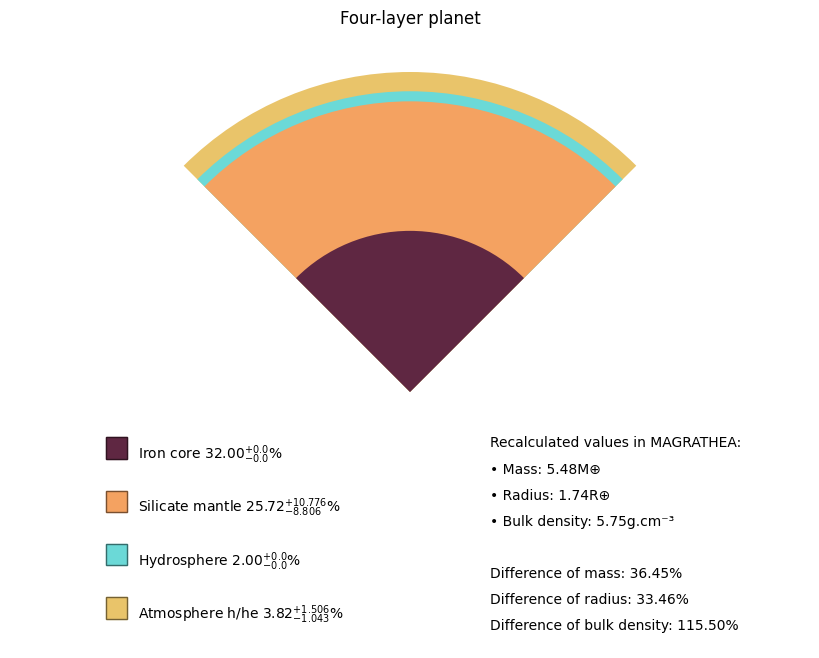
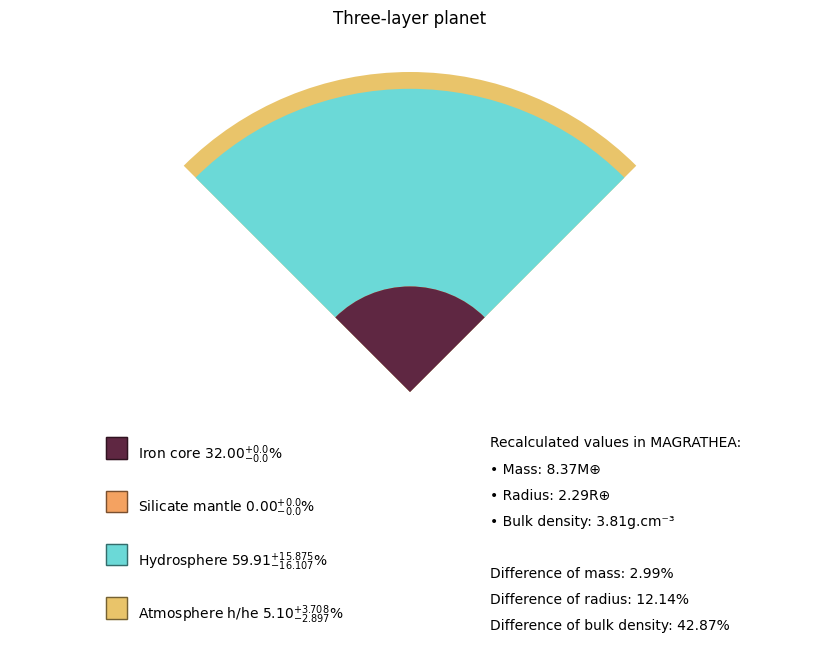
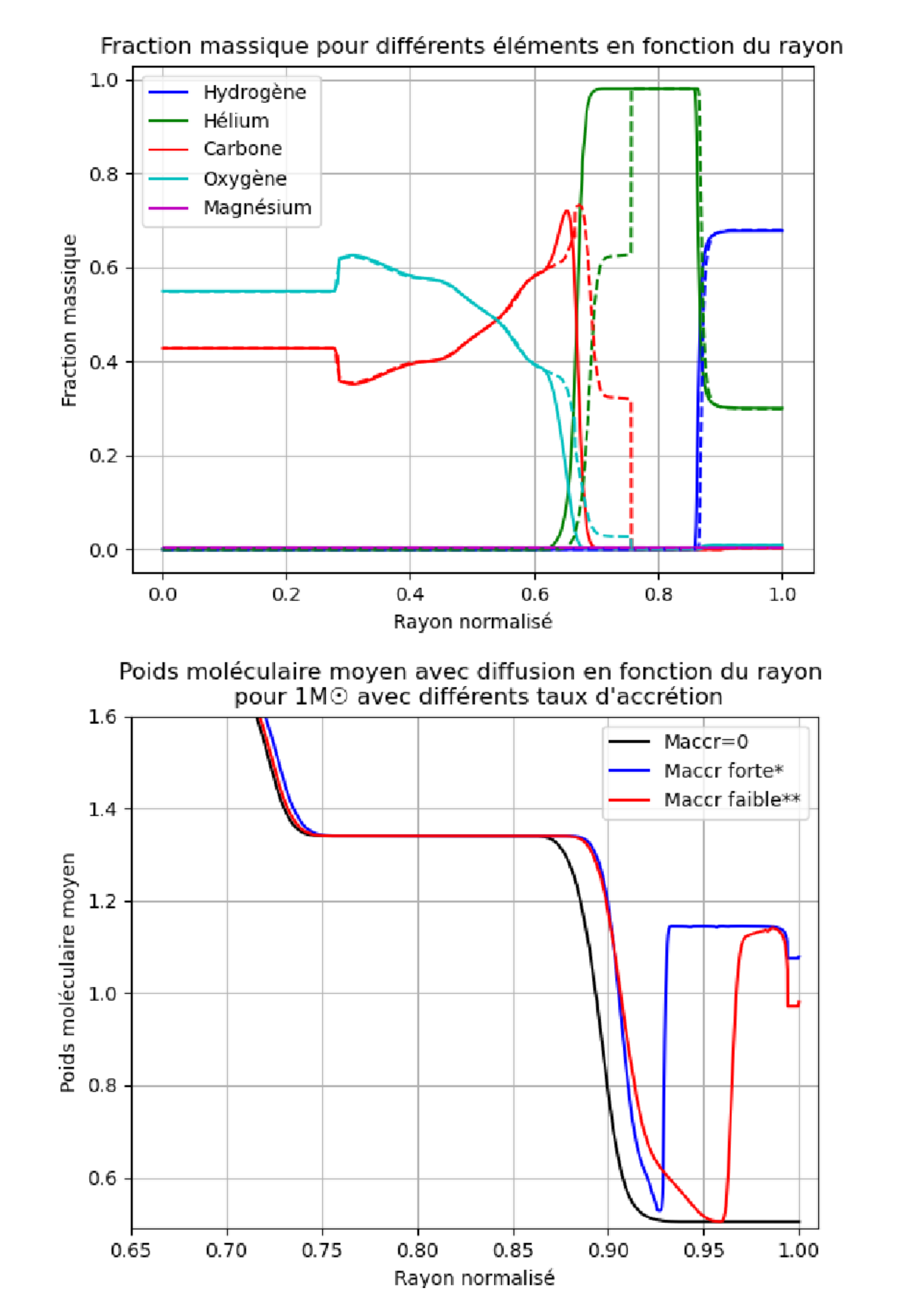
The Fate of Planetary Systems
At the end of most stars' lives, a white dwarf forms, often surrounded by a debris disk from its former planetary system. Material from the disk accretes onto the white dwarf and sinks inward due to gravitational settling, convection, and diffusion effects. Our team used the MESA stellar evolution code to model the life of stars with 1 and 1.2 solar masses, then focused on the final stage to understand the metallicities observed in white dwarf atmospheres. We investigated white dwarfs' internal structures and showed that atmospheric abundances are influenced by accretion rates, atomic diffusion, and thermohaline convection. This research aims to advance our understanding of the final stages of planetary systems.
Propagation of Sound Waves in the Atmosphere of R Scuti
In this project, I studied sound wave propagation in the atmosphere of R Scuti, a pulsating RV Tauri star with two luminosity periods, using data from the Narval and Neo-Narval spectropolarimeters at the Pic du Midi Observatory. My team and I developed a program to calculate the pulsation phases of R Scuti at the time of measurement. After identifying these phases, we reconstructed line profiles using Gaussian curves for both the average spectrum and specific atomic lines. This analysis enabled us to calculate the acceleration of the atmosphere and, consequently, the speed of sound wave propagation within it. This also allowed us to identify the double cycle in R Scuti’s pulsation, confirming the primary and secondary minima in its luminosity curves.
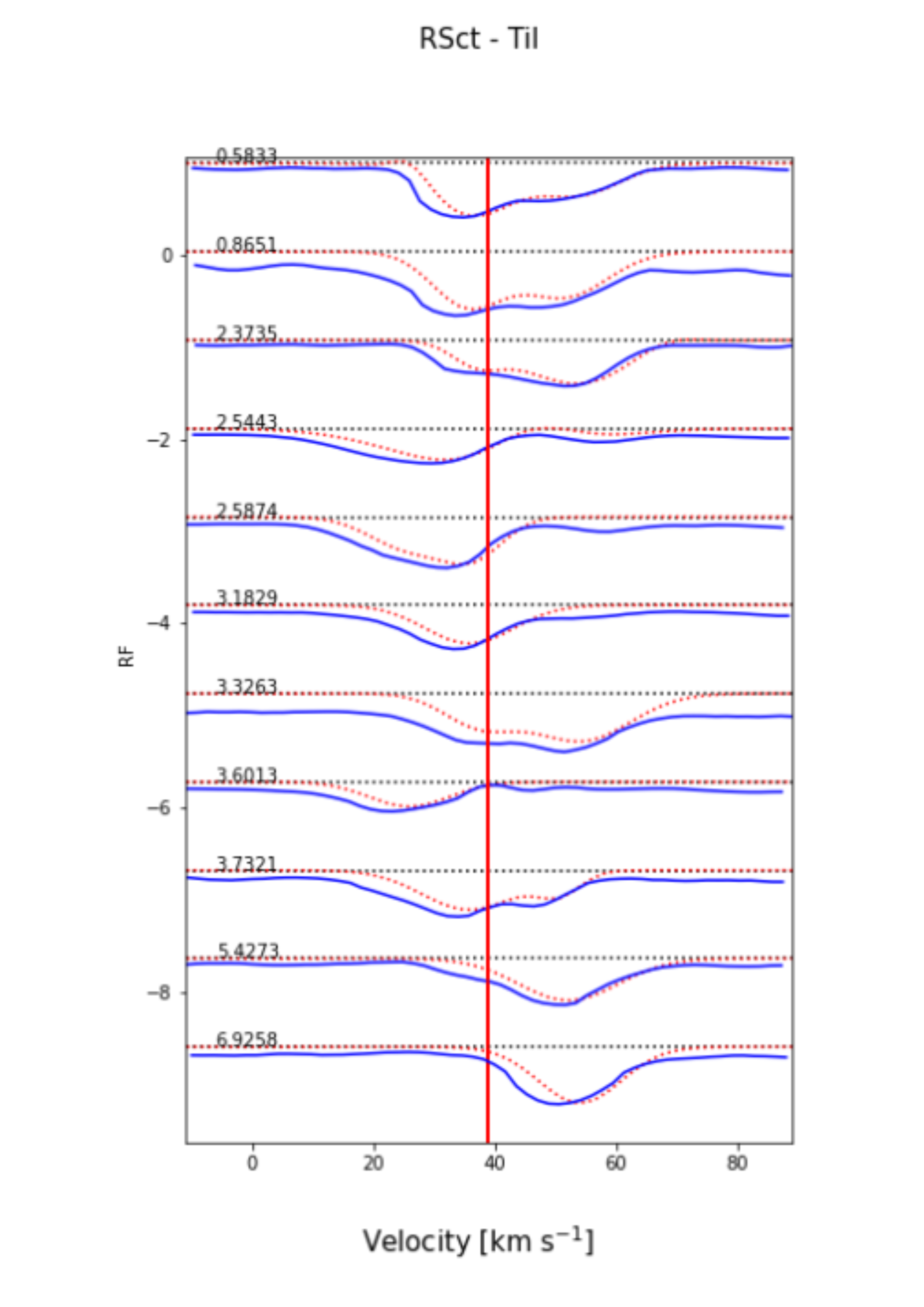
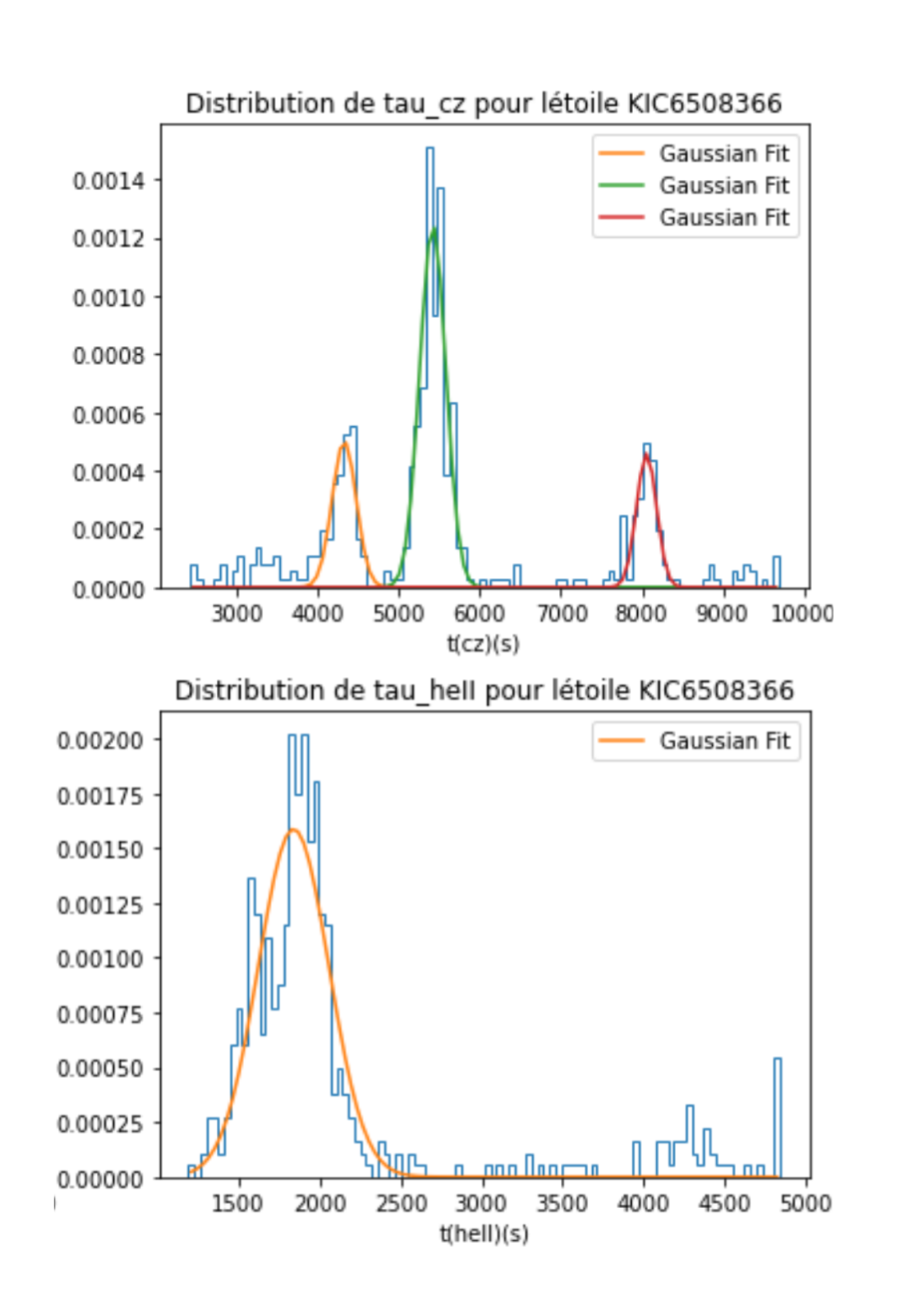
Determination of the Base of the Convective Zone and the Helium Ionization Zone for 10 Solar-Type Stars
During the summer before my second year of the Master’s program, I requested to undertake a project to delve further into asteroseismology, a rapidly growing and fascinating field, by analyzing the spectral oscillation modes of 10 solar-type stars using Kepler data. The goal was to identify the base of the convective zone and the helium ionization zone. To achieve this, I generated random ensembles of propagation modes within the maximum error bars of the initial data. Then, using the seismic index of the second difference, I was able to determine the value of the acoustic glitch, which is linked to the properties of the material. This allowed me to establish the most probable values for the acoustic depth of the convective zone and the helium ionization zone. Although this work isn't directly related to planetary science, it is crucial for enhancing our understanding of stars, which in turn aids in better understanding and characterizing planetary systems.